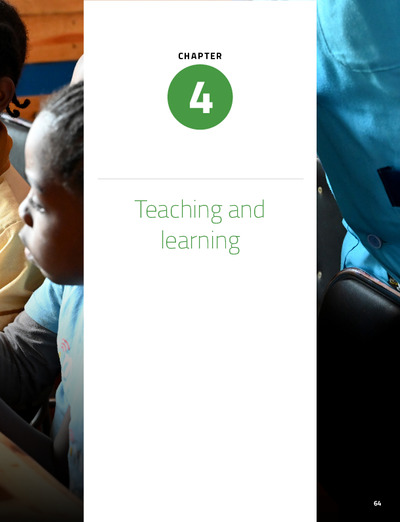Teaching and Learning |
 |
 Diese Seite wurde seit 1 Jahr inhaltlich nicht mehr aktualisiert.
Unter Umständen ist sie nicht mehr aktuell.
Diese Seite wurde seit 1 Jahr inhaltlich nicht mehr aktualisiert.
Unter Umständen ist sie nicht mehr aktuell.
 Zusammenfassungen
Zusammenfassungen
 Because digital technology impacts so many aspects
of daily life, it is a reasonable assumption that its
application in the classroom will automatically transform
and improve teaching and learning. However, while
students need to be taught about digital technology,
as part of what is called 'digital literacy' (Chapter 5), this
does not necessarily mean that students need to be taught
through digital technology. The value of digital technology
for teaching and learning needs to be proven. The ways
in which technology has been used over time to support
teaching and learning continue to evolve, alongside a
better understanding of how technology should be used.
Because digital technology impacts so many aspects
of daily life, it is a reasonable assumption that its
application in the classroom will automatically transform
and improve teaching and learning. However, while
students need to be taught about digital technology,
as part of what is called 'digital literacy' (Chapter 5), this
does not necessarily mean that students need to be taught
through digital technology. The value of digital technology
for teaching and learning needs to be proven. The ways
in which technology has been used over time to support
teaching and learning continue to evolve, alongside a
better understanding of how technology should be used.This chapter focuses on how technology is being used to support teaching and learning. First, it presents the potential of and challenges posed by technology integration and describes key trends in technology use. Second, it reviews the evidence on the possible benefits of digital technologies for improving education quality, grouping them into two broad categories: those that directly focus on improving the quality of instruction, by distributing resources more equitably, personalizing and increasing practice opportunities; and those that seek to better engage learners.
 Dieses Kapitel erwähnt ...
Dieses Kapitel erwähnt ...
 Dieses Kapitel erwähnt vermutlich nicht ...
Dieses Kapitel erwähnt vermutlich nicht ... 
 Nicht erwähnte Begriffe | Ein Notebook pro StudentIn (ENpS), Fremdsprachenlernen, Kinder, LehrerIn, Notebooks an Schulen, Schweiz, Sprachenlernen, Unterricht |
 Tagcloud
Tagcloud
 Volltext dieses Dokuments
Volltext dieses Dokuments
 Anderswo suchen
Anderswo suchen 
 Beat und dieses Kapitel
Beat und dieses Kapitel
Beat hat Dieses Kapitel während seiner Zeit am Institut für Medien und Schule (IMS) ins Biblionetz aufgenommen. Beat besitzt kein physisches, aber ein digitales Exemplar. (das er aber aus Urheberrechtsgründen nicht einfach weitergeben darf). Es gibt bisher nur wenige Objekte im Biblionetz, die dieses Werk zitieren.











 Computerspiele
Computerspiele Digitalisierung
Digitalisierung E-Learning
E-Learning Interaktive Whiteboards
Interaktive Whiteboards Lernen
Lernen Mobiltelefon
Mobiltelefon Motivation
Motivation Multimedia
Multimedia Notebook
Notebook OLPC
OLPC Primarschule (1-6) / Grundschule (1-4)
Primarschule (1-6) / Grundschule (1-4) Schule
Schule , 765 kByte)
, 765 kByte)  Biblionetz-History
Biblionetz-History